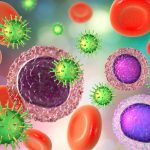Losing weight is a journey often fraught with challenges but also one filled with opportunities for transformation and growth. Understanding how to achieve sustainable weight loss requires a comprehensive approach that includes both diet and exercise. This article will delve into the intricacies of weight loss, exploring how what you eat and how you move contribute to your success. By the end, you will have a robust understanding of how to navigate your weight loss journey effectively.
The Importance of Diet in Weight Loss
Diet is often cited as the most critical factor in weight loss, making up approximately 80% of the equation, with exercise contributing the remaining 20%. This statistic underscores the importance of focusing on what you put into your body. Your diet provides the fuel your body needs to function and determines whether you store or burn fat.
One of the primary components of a successful weight loss diet is calorie control. Consuming fewer calories than your body expends helps create a calorie deficit, which is essential for losing weight. However, not all calories are created equal. Food quality plays a significant role in how your body processes calories and maintains energy levels.
Macronutrients: Balancing Your Diet
Macronutrients—proteins, fats, and carbohydrates—are vital to your overall health and weight loss efforts. Each macronutrient plays a unique role:
- Proteins: Essential for building and repairing tissues, proteins also help you feel full longer, reducing the likelihood of overeating. Sources of protein include lean meats, fish, beans, and legumes. For more detailed information on optimizing protein intake, you can refer to the NIDDK guidelines.
- Fats: Healthy fats are crucial for hormone production and overall health. They provide a sustained source of energy and can help improve satiety. Sources of healthy fats include avocados, nuts, seeds, and olive oil.
- Carbohydrates: Often misunderstood, carbohydrates are essential for providing quick energy. However, the type of carbs you consume matters. Focus on complex carbohydrates such as whole grains, vegetables, and fruits, which provide fiber and essential nutrients without spiking blood sugar levels.
The Role of Fiber in Weight Loss
Fiber is an often-overlooked component of a weight loss diet. High-fiber foods fill you up more efficiently than low-fiber foods, making it easier to maintain a calorie deficit. Fiber-rich foods include vegetables, fruits, whole grains, and legumes. Incorporating these foods into your diet can help you feel full longer and reduce the temptation to snack on less healthy options.
Hydration: The Silent Hero
Staying adequately hydrated is crucial for weight loss. Water aids in digestion helps flush toxins from your body, and even help you feel fuller, reducing your overall calorie intake. Aim to drink at least eight glasses of water daily, and more if you are physically active. Sometimes, feelings of hunger can signal that your body needs water rather than food.
Exercise: The Catalyst for Change
While diet is critical for creating a calorie deficit, exercise helps accelerate weight loss and improves overall health. Regular physical activity boosts your metabolism, helping you burn more calories even when at rest. Additionally, exercise has numerous other benefits, including improved cardiovascular health, stronger muscles, and better mental health.
Types of Exercise for Weight Loss
To maximize weight loss, incorporate a mix of different types of exercise into your routine:
- Cardiovascular Exercise: Running, cycling, and swimming increase your heart rate and help burn calories. Aim for at least 150 minutes of moderate-intensity cardio per week or 75 minutes of high-intensity cardio, as health guidelines recommend.
- Strength Training: Building muscle through strength training can increase your resting metabolic rate, meaning you burn more calories even when not exercising. Include activities like weightlifting, resistance band exercises, or bodyweight exercises at least two days per week. For more information on integrating strength training into your routine, consider the tips provided by the NIDDK.
- Flexibility and Balance Exercises: Yoga and stretching improve your flexibility and balance, reducing the risk of injury and improving overall physical performance. These exercises can also help manage stress, which is a significant factor in weight loss.
The Interplay Between Diet and Exercise
It's essential to recognize the symbiotic relationship between diet and exercise. While diet alone can help you lose weight, combining it with regular exercise can lead to better and more sustainable results. Exercise enables you to break through weight loss plateaus, build muscle mass, and improve overall well-being.
When you exercise, your body requires more energy, which can help you create a more significant calorie deficit. Regular physical activity can also improve your metabolism, meaning you'll burn more calories even at rest. This interplay between diet and exercise is crucial for achieving long-term weight loss success.
Overcoming Common Roadblocks
The journey to weight loss is rarely straightforward. You may encounter various obstacles that can hinder your progress. Here are some common roadblocks and how to overcome them:
- Lack of Time: Many struggle to find time for exercise and healthy meal preparation. Overcome this by integrating small physical activity into your day, such as taking short walks during breaks or doing quick home workouts. Meal prepping on weekends can also save time during busy weekdays.
- Injury or Physical Limitations: If you have physical limitations or injuries, consult with a healthcare professional to design a safe and effective exercise plan. Low-impact activities like swimming or using an elliptical machine can be excellent alternatives.
- Plateaus: Weight loss plateaus are common and occur when your body adapts to your new routine. To break through a plateau, vary your exercise routine and adjust your diet. Increasing the intensity of your workouts or incorporating new activities can help reinvigorate your progress.
Mindset and Motivation
Maintaining a positive mindset and staying motivated are crucial for long-term success. Set realistic and achievable goals, both short-term and long-term. Celebrate your progress, no matter how small, and don't be too hard on yourself if you experience setbacks.
Find a support system, whether it's friends, family, or online communities, to share your journey with. A support network can provide encouragement, accountability, and motivation to keep going. Remember, weight loss is not just about the destination but also the journey and the positive changes you make along the way.
Practical Tips for Sustainable Weight Loss
To ensure that your weight loss journey is sustainable, consider the following practical tips:
- Track Your Progress: Keeping a food and exercise journal can help you stay accountable and monitor your progress. Various apps are available that make tracking easy and convenient.
- Prepare Healthy Snacks: Having healthy snacks readily available can prevent you from choosing unhealthy options when hunger strikes. Consider snacks like fruits, nuts, or yogurt.
- Plan Your Meals: Planning your meals can help you make healthier choices and avoid impulsive eating. Create a weekly meal plan and stick to it as much as possible.
- Stay Consistent: Consistency is key to achieving and maintaining weight loss. Please stick to your diet and exercise routine, even when you don't feel like it.
- Get Enough Sleep: Adequate sleep is essential for weight loss and overall health. Aim for 7-9 hours of sleep per night to support your body's recovery and metabolism.
Conclusion: A Journey Towards a Healthier You
Achieving and maintaining a healthy weight involves a comprehensive approach that combines a balanced diet, regular exercise, and a positive mindset. By understanding the importance of both diet and exercise and how they work together, you can navigate your weight loss journey more effectively.
Remember, weight loss is a personal journey, and what works for one person may not work for another. Finding a routine that fits your lifestyle and meets your needs is essential. Embrace the process, stay motivated, and celebrate your progress.
For more information on weight management and healthy living, refer to the NIDDK and the American Diabetes Association. By utilizing these resources and implementing the strategies discussed in this article, you can achieve your weight loss goals and enjoy a healthier, happier life.









